È temerità chiamar vano o superfluo
tutto quello dell'universo
che non serve per noi
Galileo Galilei
che non serve per noi
Galileo Galilei
Subject conceived together with students of the Master in Science Communication “F. Prattico ” in SISSA, year 2021/2022 during the course “ArtScience, communicating science through artistic languages”.
m_CRO is an artistic installation created together with scientists and various Research Centers of Friuli Venezia Giulia. It invites us to ask ourselves about anthropocentrism, or rather the tendency of man to consider himself at the center of the world in which he lives.
The microscopic and the macroscopic are equalized and placed at the same dimensional level: the action of observing, combined with the sensation of being observed, wants to destabilize our egocentric vision in favor of a more "ecocentric" existence.
We are only a small part of something bigger than us.
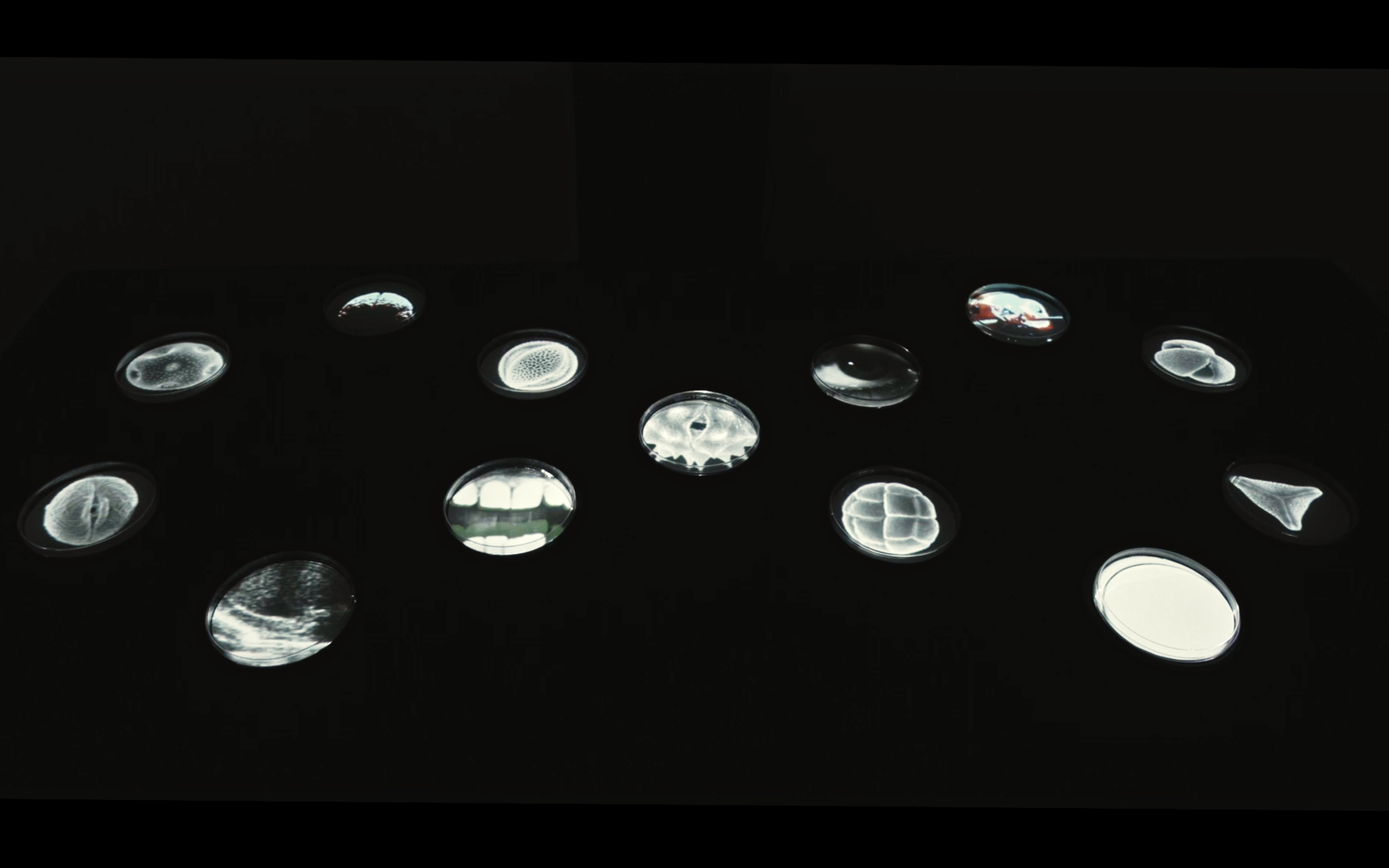
The microscopic and the macroscopic are equalized and placed at the same dimensional level: the action of observing, combined with the sensation of being observed, wants to destabilize our egocentric vision in favor of a more ecocentric existence.
m_CRO project uses videomapping technique with a zenithal projection on a table: different images are projected inside Petri dishes, disc-shaped containers usually used by scientists to grow mold and bacteria cultures.
In science labs the Petri dish is a container of microworlds observable under the microscope: a small place where the action of observing is focused on a unidirectional level, that is, from man to microorganism, from MACRO to MICRO.
This one-sidedness of the gaze inevitably places us at the center of the world in which we live: as observers, we take on the role of absolute protagonists of the environment in which we exist.
With this installation we intend to trigger a short circuit in our way of relating to the environment.


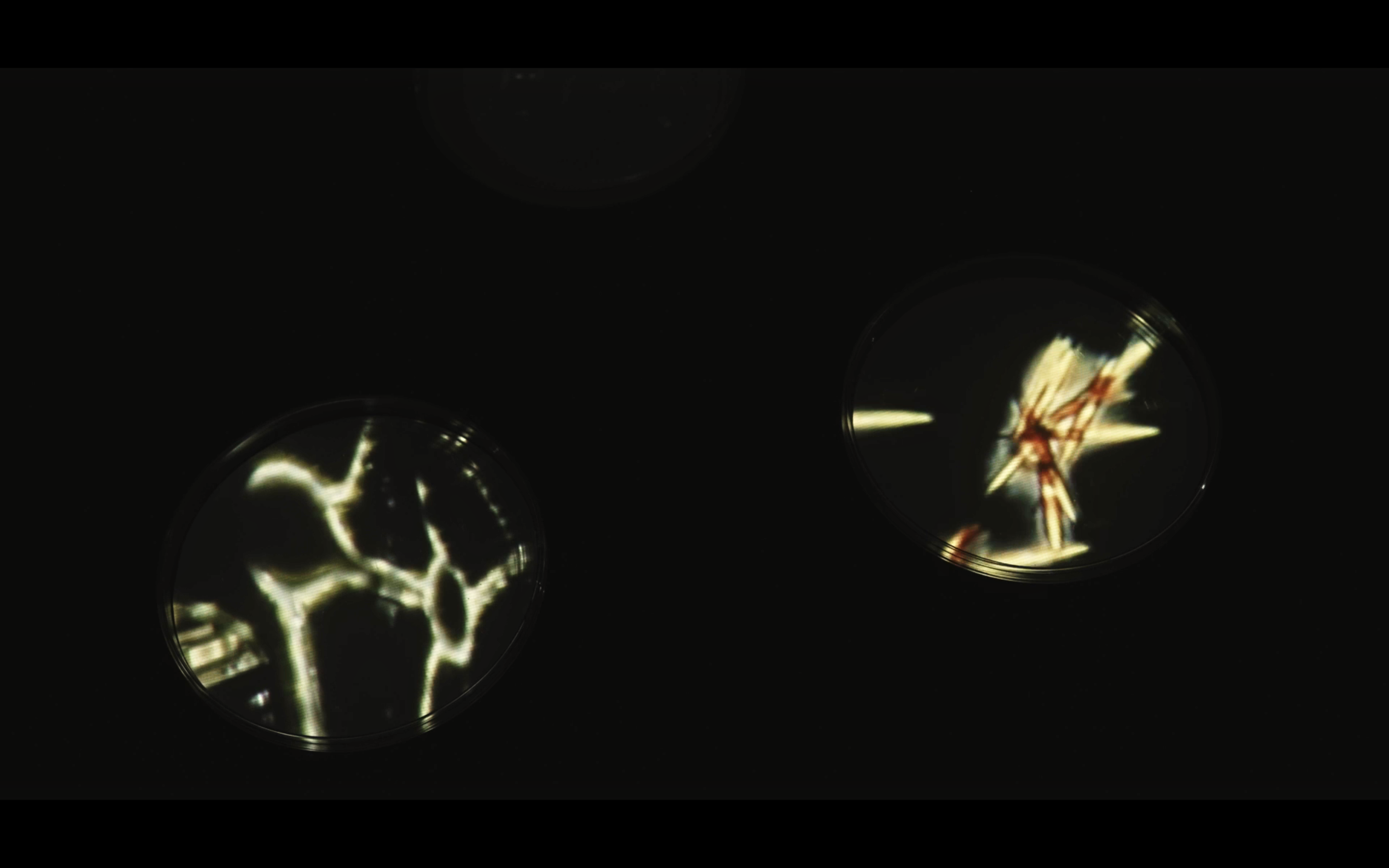


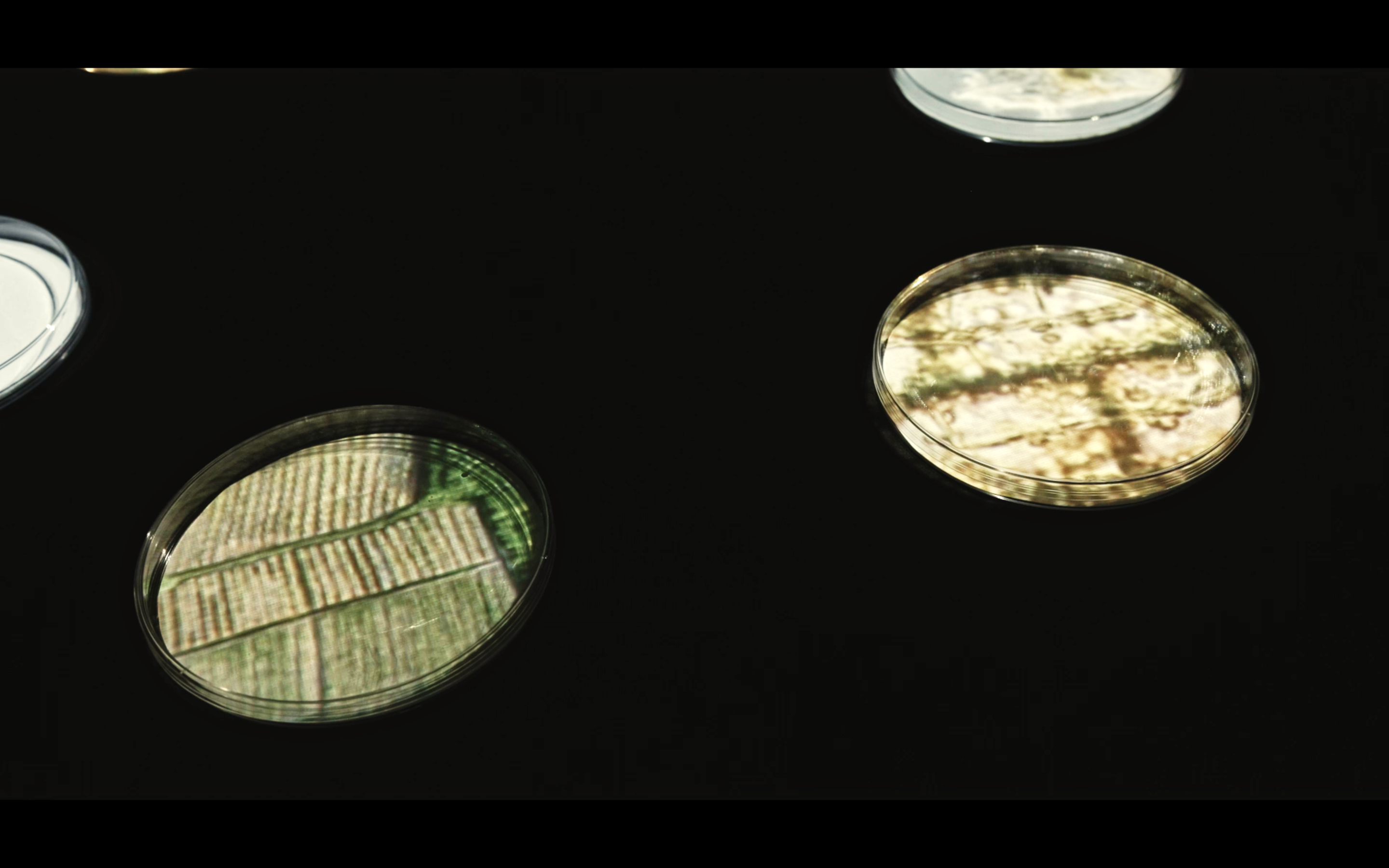
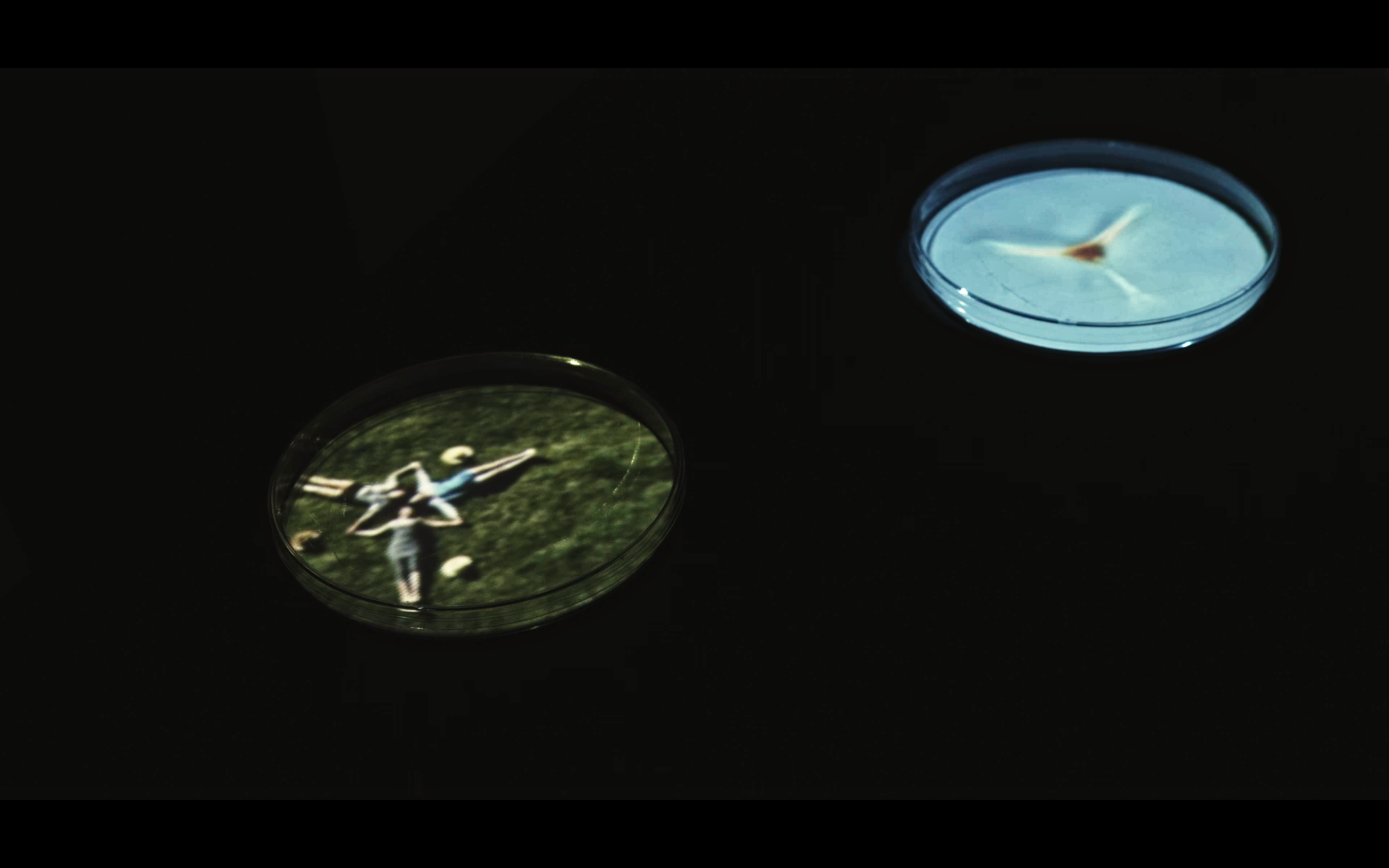
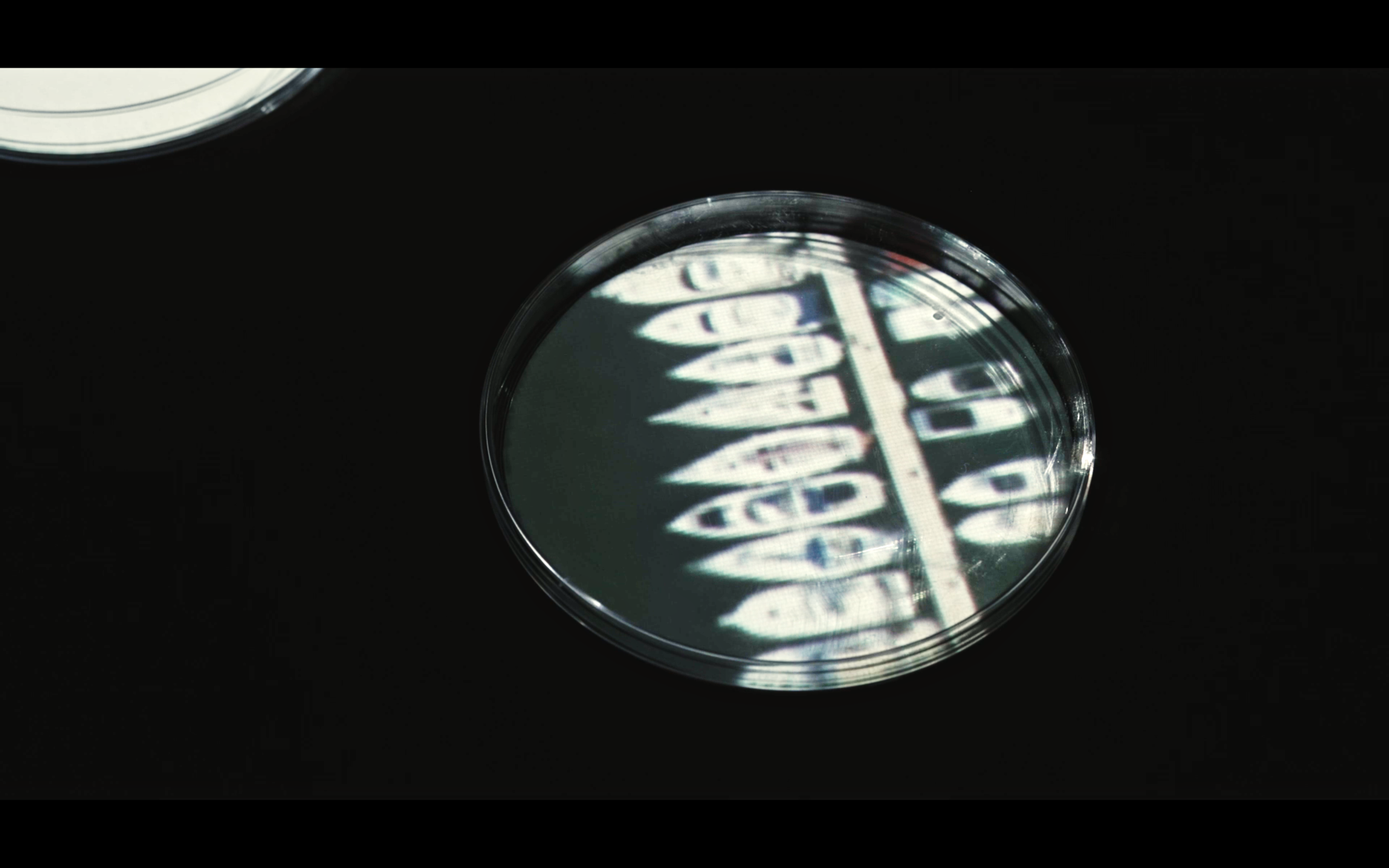
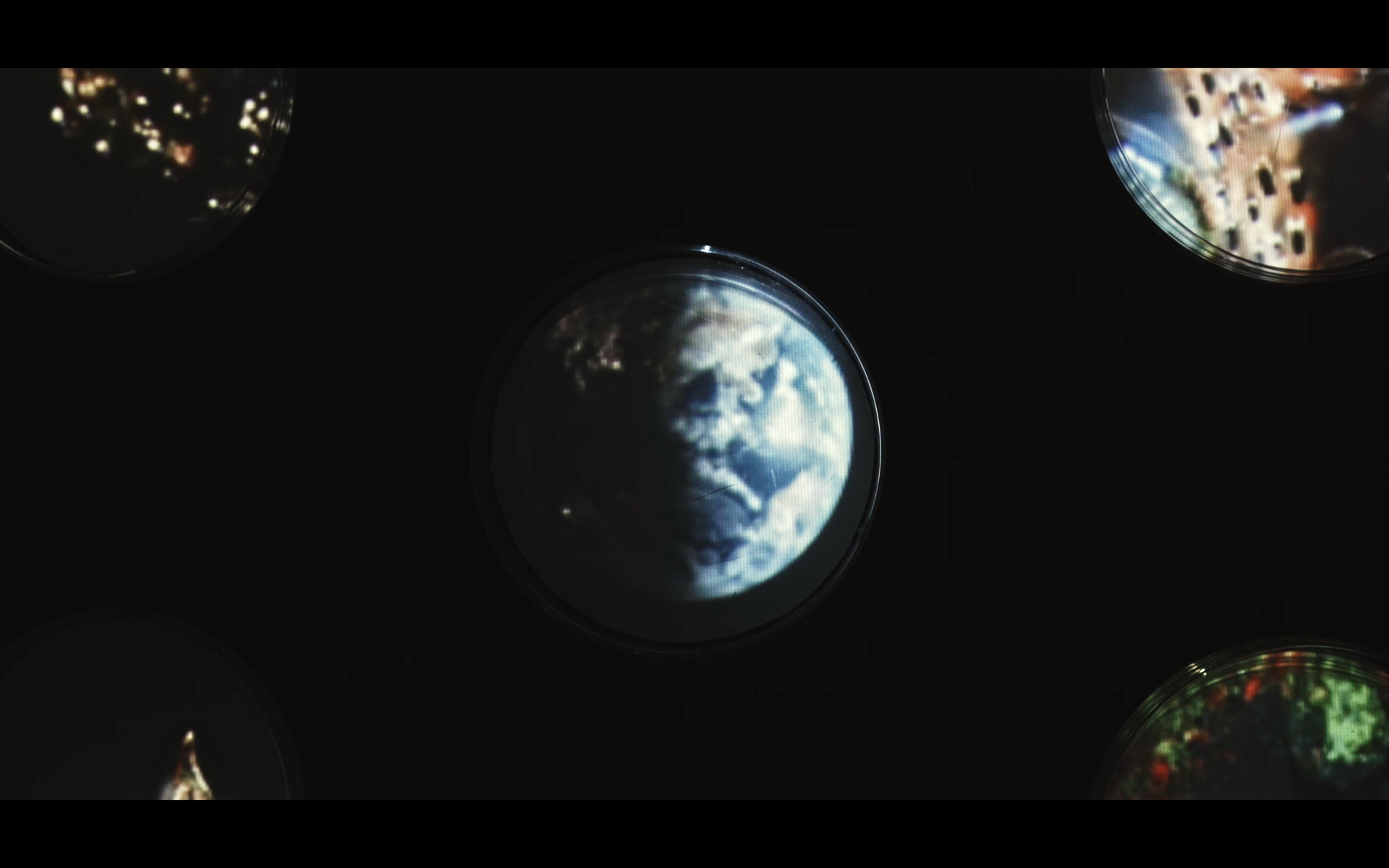
At the center of the installation we find the Earth, intent on its continuous rotation that takes us from day to night. The circadian cycle drives the change of the other projections on the adjacent discs, arranged to compose the symbol of infinity.
Some videos projected inside the Petri discs represent the protagonists of the microscopic world, such as tardigrades, pollen, bacteria, plankton ... while in some others we can se us, human beings, moving in our macroscopic world, but filmed by an external eye of a camera fixed on a drone.
Even the environment in which man lives and moves is shrunk and confined within these small discs suitable for observation: coasts, woods, rivers and roads, illuminated cities, buildings.
We can therefore observe microscopic algae swimming next to human beings intent on taking a bath in a pool.
We can spot intricate ramifications of mold together with the autumn foliage of the Karst, taken from a bird's eye view by the drone.
And again lines of lights that plow the Petri dish in geometric patterns, which we can hardly distinguish as diatoms (small unicellular algae) or cities illuminated at night shot from above.
To add a touch of reality, we may find some fresh bacterial cultures placed inside Petri dishes and a round mirror, to complete the symbol of infinity, through which it is possible to place spectator’s identities within the installation. A further help to destabilize the self-centered view of the world.
A project by Francesco Scarel
Music by Andrea Gulli
The videos and images collected for this installation come from different sources.
Some, concerning plankton, were registered by me at the National Institute of Oceanography and Experimental Geophysics during a 3-day artistic residency, together with artist Stefania Rota and Alfred Beran,a resident research scientist.
The bacterial cultures and real molds were grown in SISSA - International School of Advanced Studies, in particular thanks to Sara Finaurini post doc at the Computational Genomics Laboratory of prof. Remo Sanges and Christina Vlachouli from the technical staff of Neurobiology & Functional and Structural Genomics.
The International Center for Genetic Engineering and Biotechnology (ICGEB) and the laboratory of prof. Zacchigna kindly provided video material regarding their research on cardiomyocytes.
Sara Brandoli, student in the Laboratory of Evolutionary Zoology of Unimore - University of Modena and Reggio Emilia made and kindly provided the videos of the tardigrades.